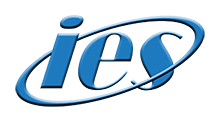
Overview
AkzoNobel, the international paints and coatings company, commissioned IES to design, manufacture and commission a SCADA/PLC (Supervisory Control and Data Acquisition/ Programmable Logic Controller)-based control system for the paint filling line at the Dulux plant in Cork. Dulux is the largest paint manufacturer in Ireland; it began production in 1886, and became part of AkzoNobel in 2008.
The Challenge
The quality and consistency of Dulux paints are central to the company’s reputation, and the control system for its filling lines is, therefore, a crucial element in maintaining its pre-eminence. IES engineers were able to work with Dulux to identify its needs and to design a sophisticated system using the latest hard- and software.
The Dulux paint-filling system consists of water and solvent-borne paint that is fed to three automated paint-filling lines. These lines are as follows:
- Mount line
- De Vree V156 line
- Superfos line
Supply of paint to these lines is fed and controlled from a number of mixing tanks. The mixing tanks are connected to the filling lines via six filtration skids which are fixed for the solvent-borne system but use movable flexible hoses for the water borne system. To ensure that the hoses are connected properly the operator is required to open manual valves on the flexible hose manifolds for the water borne system. The manual valves on the flexible hose coupling have proximity switches that provide the hose positional feedback. These switches tell the control system when hoses are connected.
The control system designed by IES needed to manage vessel cleaning, manufacture, transfer, and additional cleaning. Accuracy in this complex system is obviously crucial, as is thoroughness in the cleaning process, in order to ensure product consistency and the avoidance of costly waste.
The Strategy
IES planned a system to execute predefined sequences for controlling paint distribution, paint filling, and cleaning and pigging (scraping out residual liquid) of the paint lines. The system enables an operator to start up, monitor and control all of the main plant equipment and the following process functions:
- Sequences
- Interlocks
- Procedures for safe plant operation
- Interface with field instrumentation
- Communicate with further PLCs (Programmable Logic Controllers) managing other plant functions
- Alarm detection and displaying.
Key Objectives and Benefits
The IES installation uses SCADA (Supervisory Control And Data Acquisition) system, the modern solution to monitoring and controlling plant and equipment through the gathering and analysis of real time data.
The benefits of a SCADA system include:
- Data gathered in real time, enabling the effective management of the process
- Reduction in energy use
- Reduction in process downtime
- More efficient use of manpower
- Increased life of equipment through monitoring of system performance.
- Reduced requirement for troubleshooting
- Increased compliance with regulatory agencies through automated report generating.
The Installation
1.1 SCADA/PLC in Operation
The Dulux Paint Filling Line Control System manages vessel cleaning (CIP), manufacture, transfer, and additional cleaning.
1.2 System Overview
The control system for the Paint Filling Line is based on the Siemens S7 317-2 PLC system with ET-200 remote I/O modules. The interface with users is provided by Siemens MP377 HMI stations. The control system is designed to execute predefined sequences for controlling paint distribution, paint filling and cleaning/pigging of the paint lines. The system enables an operator to start up, monitor and control all of the main plant equipment and the following process functions:
- Sequences
- Interlocks
- Procedures for safe plant operation
- Interface with field instrumentation
- Communicate with further PLCs managing other plant functions
- Alarm detection and displaying.
1.3 Main Interfaces
The plant equipment is connected to the Main PLC panel via remote I/O & HMI panels over networks and through hardwired I/O (see network layout below).
The PLC code is developed using Simatic Step7 programming software. The HMIs are designed using Siemens WinCC Flexible tool.
The four MP377 15” HMIs screens & mimics provide the operator with the required information to initiate and complete the filling of paint, taking the operator through the necessary steps.
Each sequence is initiated by the operator via the HMI panels and filling is started and stopped using manual pushbuttons. The screens present the user with information on the sequences, alarms and messages that prompt the user to take certain actions to ensure safe and reliable operation.
(See layout of the control system below)
The Outcome
The control system successfully designed and installed by IES has up-to-date hardware and software components; it manages all required procedures, and provides operators with a safe, intuitive interface. The system is fully validated, and compliant with EN 61511,the recognised industry standard for the management of safety instrumented systems.
Project Team
IES Project Manager : Pat O’Sullivan,
SCADA Software Engineer – Jose Riberio,
PLC Software Engineer – Jim Mackessy,
Installation & Commissioning Engineers – Ted McCarthy & Leo Seery
Did You Know?
‘Like painting the Forth Bridge’ - so the saying goes; as soon as workmen finish re-painting this huge 19th century bridge in Scotland, they have to begin all over again. However, this no longer applies, as a new long-lasting paint is being put on the bridge that should last for 25 years.
The original ‘Dulux Dog’ (an Old English Sheepdog called Dash) appeared in a TV advert in 1961. Since then there have been 13 different dogs, many of them breed champions.
The earliest known cave paintings were made about 40,000 years ago, in the Paleolithic era. Pigments included vegetable dyes and blood, but also minerals such as iron oxide, manganese and kaolin. It is now thought that the artists who made them were probably women.
